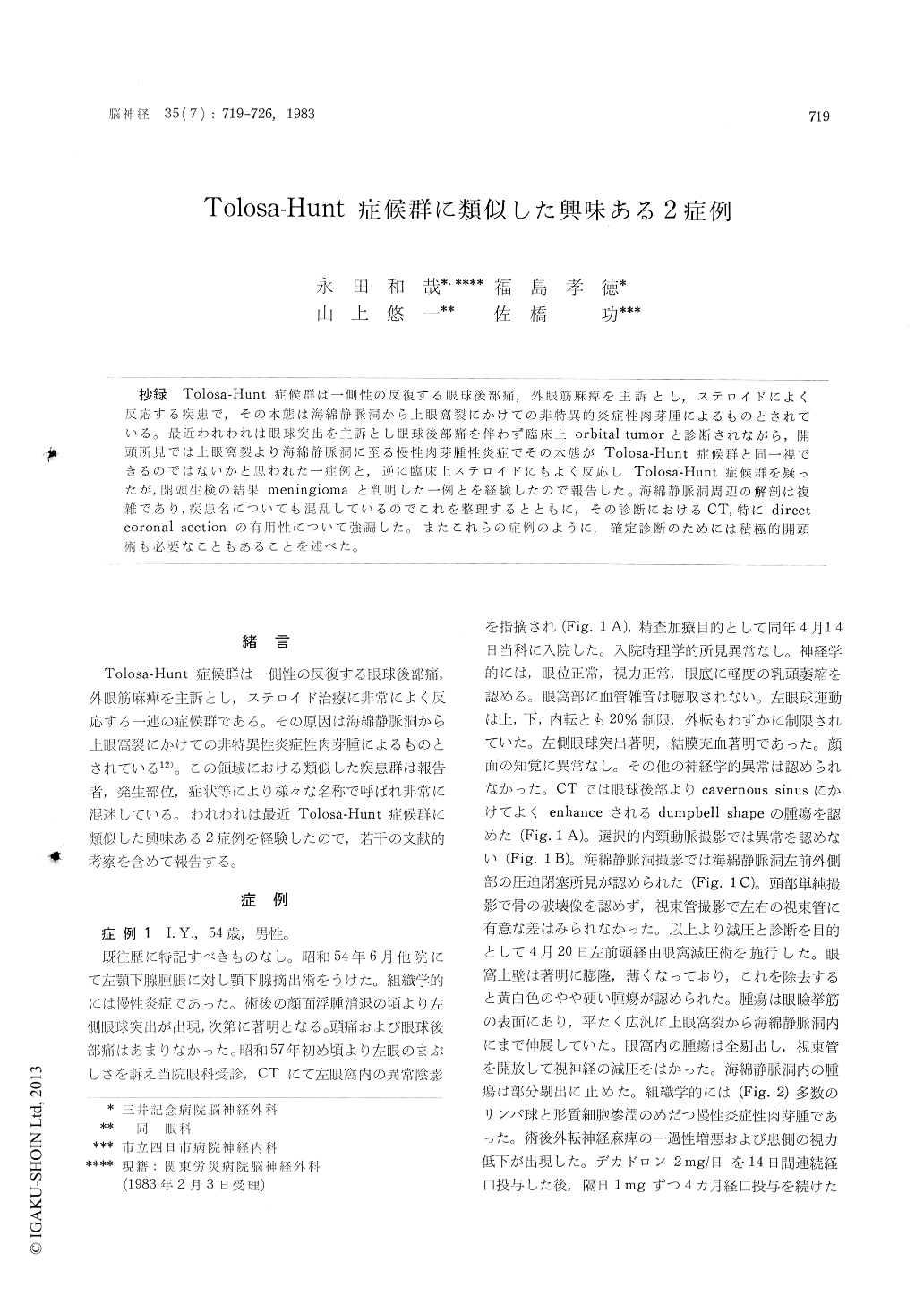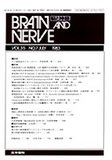Japanese
English
- 有料閲覧
- Abstract 文献概要
- 1ページ目 Look Inside
抄録 Tolosa-Hunt症候群は一側性の反復する眼球後部痛,外眼筋麻痺を主訴とし,ステロイドによく反応する疾患で,その本態は海綿静脈洞から上眼窩裂にかけての非特異的炎症性肉芽腫によるものとされている。最近われわれは眼球突出を主訴とし眼球後部痛を伴わず臨床上orbital tumorと診断されながら,開頭所見では上眼窩裂より海綿静脈洞に至る慢性肉芽腫性炎症でその本態がTolosa-Hunt症候群と同一視できるのではないかと思われた一症例と,逆に臨床上ステロイドにもよく反応しTolosa-Hunt症候群を疑ったが,開頭生検の結果meningiomaと判明した一例とを経験したので報告した。海綿静脈洞周辺の解剖は複雑であり,疾患名についても混乱しているのでこれを整理するとともに,その診断におけるCT,特にdirectcoronal sectionの有用性について強調した。またこれらの症例のように,確定診断のためには積極的開頭術も必要なこともあることを述べた。
The Tolosa-Hunt syndrome is characterized by recurrent unilateral painful ophthalmoplegia which responds to systemic steroid therapy dramatically. The etiology appears to be a non-specific inflam-mation in the cavernous sinus and the superior orbital fissure.
Two interesting cases similar to this syndrome are described. One is a 54-year-old man with moderate left exophthalmos who had no complaint of retro-orbital pain. CT scan demonstrated the left orbital tumor, and the orbital decompression surgery was performed. The white-yellowish tumor was found extending the orbit through the superior orbital fissure into the cavernous sinus. Histological examination revealed non-specific inflammatory granuloma. Despite the unusual clinical symptoms, the etiology of this case ap-peared to be identical with the Tolosa-Hunt syndrome.
The other case is a 16-year-old girl who had a 2 years' history of recurrent left retro-orbital pain and the complete III rd nerve palsy. CT scan demonstrated a small enhancing lesion in thecavernous sinus. Corticosteroid treatment improved her HI rd nerve palsy within 2 days, however the CT scan after the treatment revealed no change of the lesion size. Left frontotemporal craniotomy was performed and the whitish tumor in the cavernous sinus was partially removed. Histological examination revealed that the tumor was typical meningioma with whorl-formation.
The anatomical structure of the cavernous sinus is so complicated that the diseases arising from this area show quite different appearances. For the differential diagnosis of these lesions, the carotid angiography and the cavernous sinusvenography were said to be useful. However, recent advances in CT technology made it possible to suspect these lesions non-invasively and to compare the size before and after the cortico-steroid treatment. Direct coronal view is by far the most useful. Although there have been several reports recommending no surgical intervention, some cases similar to ours need the surgical exploration for the accurate diagnosis and the appropriate treatment.

Copyright © 1983, Igaku-Shoin Ltd. All rights reserved.


